John Keats (1795-1821) on beauty.![]()
A thing of beauty is a joy forever;
Its loveliness increases; it will never
Pass into nothingness.
Endymion. Book i.
Beauty is truth, truth beauty,
—that is all Ye know on earth,
and all ye
need to know.
Ode on a Grecian Urn.
topography | vegetation | feature | circulation | buildings | furnishings | aesthetics
 Much like the floor plan and ceiling heights of an interior contribute to the character
and significance of a building or structure, the spatial organization and land
patterns within the landscape affect its character and significance.
Much like the floor plan and ceiling heights of an interior contribute to the character
and significance of a building or structure, the spatial organization and land
patterns within the landscape affect its character and significance.
The organization or patterns of the landscape are defined by topography, vegetation,
circulation, buildings and structures, and furnishings and objects. Some of these
features form the "walls" of a space, such as a hedge, fence or wall;
others act as "corridors", channeling movement or directing views, like
walks, bridges or creeks. Together, some or all of these features create spaces
- many related to specific functions or uses.
Landscape education opportunities
Aesthetic, from aisthesis, perception, sensation [Greek] etymological discussion:
"Perception is a complex of problems….to explain the physiological processes involved in sensing an an object.... Aisthesis found itself involved in the epistemological problems raised by Heraclitus & Parmenides.
from the ancient Greek writings of, Parmenides, Heraclitus, Empedocles, Theophrastus as Aristotle's’ student.
Definition: (adj.) Pertaining to the appreciation of beauty or good taste; visually pleasing. The corresponding noun is "aesthetics," which means the study of the appreciation of beauty, or expression of beautiful qualities.
topography | vegetation | feature | circulation | buildings | furnishings | aesthetics
![]()
Inspirational Landscapes Project
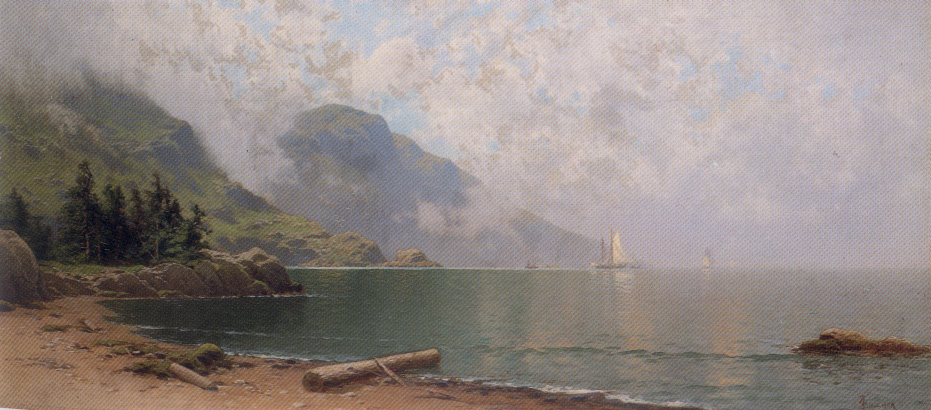 Grand Manan Island, New Brunswick, Canada on the Bay of Fundy.
Grand Manan Island, New Brunswick, Canada on the Bay of Fundy.
Landscape painting as an art form in the west.
Preliminary bibliography of landscape art and landscape writing- Updated October 2003
This is a selection of a wide range of materials that have been gathered to date.
Additional references will be added during the project. If you want to add a reference,
please email details to Chris Johnston at chris@context-pl.com.au author of this
site.
Ashton, M. (1985) Interpreting the Landscape: Landscape archaeology in local studies,B. T. Batesford, London.
Appleton, J. (ed) (1979) The aesthetics of landscape. Rural Planning Services Ltd., Publication No. 7, University of Hull.
Arnot, R.H. & Grant, K. The application of a method for terrain analysis to
functional land-capability assessment and aesthetic landscape appreciation. Landscape Planning, No. 8, pp. 269-300.
Aston, M. (1985) Interpreting the landscape: Landscape archaeology in local studies. B. T. Batsford, London.
Bachelard, G (1964) The poetics of space. Beacon Press, Boston.Berger, J. (1972) Ways of seeing. BBC and Pelican Books.
landscapes | visual test | topography | vegetation | feature | circulation | buildings | furnishings | aesthetics
Topography
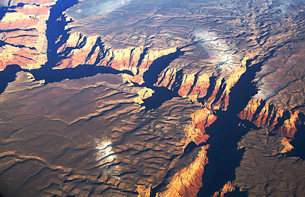 The shape of the land - its slope, form, aspect - is important in defining the
character of an historic landscape. Topography creates space in the landscape,
supports specific uses and other landscape features, and often directs or creates
views.
The shape of the land - its slope, form, aspect - is important in defining the
character of an historic landscape. Topography creates space in the landscape,
supports specific uses and other landscape features, and often directs or creates
views.
Emphasis should always be on proper maintenance practices which protect topographic
features and attributes. Care should be taken in project work to protect fragile
soils, slopes and landforms. Protective measures, such as erosion controls and
limits on construction vehicles and equipment, should be incorporated into projects.
Vegetation
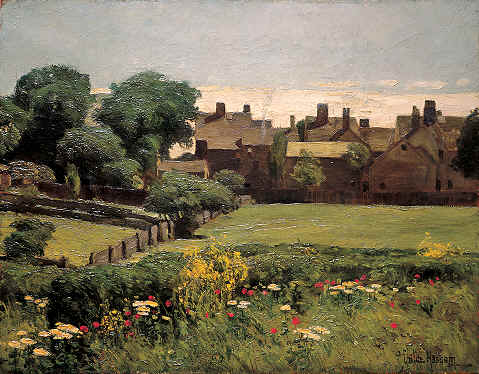
Individual plants, such as a specimen tree, or groups of plants, such as a hedge row, alee, agricultural field or woodlot, can contribute to an historic landscape's significance. Vegetation may be important for its historical association, horticultural or genetic value, or aesthetic or functional qualities.
Feature
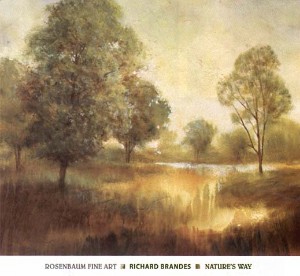 As with any historic feature, maintenance is of the utmost importance, with an
emphasis on retention and repair. Unlike more static features such as buildings
and structures, vegetation is very dynamic; therefore, treatment must acknowledge
the full range of vegetation processes, including germination, growth, seasonal
change, maturity, decay and death.
As with any historic feature, maintenance is of the utmost importance, with an
emphasis on retention and repair. Unlike more static features such as buildings
and structures, vegetation is very dynamic; therefore, treatment must acknowledge
the full range of vegetation processes, including germination, growth, seasonal
change, maturity, decay and death.
Daily, seasonal and cyclical practices, such as corrective pruning, cabling, deep
root fertilization and propagation, can prevent more extreme repair measures at
a latter date. If and when replacement of an individual plant or group of plants
is unavoidable, care should be taken to insure the replacement vegetation matches
the historic in habitat, form, color, texture, fruit/flower and scale.
Circulation
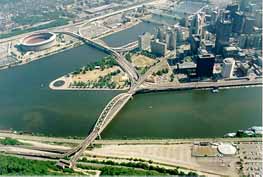
Within the historic landscape, historic circulation features can occur as individual
elements or as systems or networks. Examples such as roads, parkways, trails,
paths and canals illustrate the wide range of circulation features which may occur
within a historic landscape.
Routine maintenance of these features helps to ensure that individual elements, as well as entire networks can be retained. When a specific feature or portion of a system no longer actively supports circulation, such as an abandoned rail corridor or canal lock, the feature should be retained and protected.
Special attention must be given to considering repairs and/or modifications which address contemporary circulation issues, such as vehicular speed limits, sight-lines, and maintenance procedures (e.g. snow plowing). While such issues are valid, care must be taken to retain the historic character of circulation features important to the property's significance.
Alignment, surface treatment, width, edge, grade, materials and infrastructure are those attributes which define the character of a circulation feature. Repairs and limited replacement should respect their attributes.
Buildings and Structures
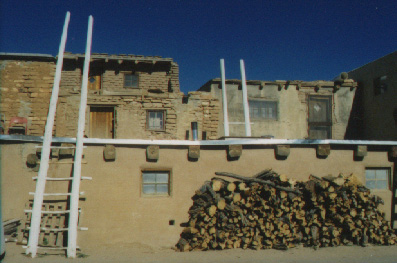
Historic buildings and structures are important components within historic landscapes.
Their relationship to one another and to the other landscape features discussed,
is a key concern when considering both routine maintenance or special projects
within the landscape.
Here a sacred meeting place of native peoples appears to any casual observer as part of the pueblo [Spanish for settled town site] but the importance of local knowledge establishes the role of such buildings and structures for the coherence of the community.
Site Furnishings and Objects
Site furnishings and objects are small scale elements that may be movable or permanently
installed, used seasonally or continuously, and be independent of other elements
or part of a system. In addition,these elements may be functional, decorative
or both. While furnishings and objects may appear to be small components in the
historic landscape, the cumulative effect of these elements is an important facet
of a property's historic significance.
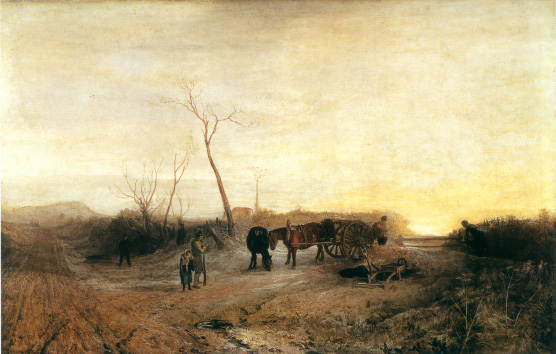
The location, aesthetic and construction details, and materials of benches, lights,
signs, fences, flagpoles, monuments or urns should be carefully considered in
both routine maintenance and more involved undertakings. Of particular concern
is the relocation of some furnishings and objects to accommodate new uses.
Elements, such as historic streetlights, entry signs or memorials, have direct functional or associative relationships with other features in the landscape. Moving these elements not only diminishes their importance, but establishes a false historic image.
Routine maintenance of site furnishings and objects will increase the life of
these elements. When portions of these elements are too deteriorated to repair,
replacement - of all or a portion of the element - should match the original in
location, design, materials and finish.
The evaluation of proposed changes to spatial organization and land patterns considers the relative significance of a specific space or pattern to the overall landscape. In historic designed landscapes, spaces may be "ranked" in terms of importance. For example, the front lawn of an estate grounds may be considered more significant than a storage yard associated with a secondary support building. Similarly, land patterns can be organized in a hierarchical fashion: the overall arrangement of fields to orchards to woodlot may be considered more important than the specific patterns of crops within the fields or trees within the orchard.
Seeing Spatial Organization and Land Patterns
I - one
Joshua Tree National Park, California's Sonoran desert biome, JVS; 2006.
II - two
The Long Valley Caldera from Mammoth Mountain; Sierra Nevada Mountains, California, JVS, 2006.
III -- Three seeing what the site means.
The long valley caldera was the site of the enormous volcanic explosion that blanketed half the country in ash, 740,000 years ago.
next, the necessity of Balance.
Central Park, New York City.
The ultimate source of New York City's water,
From New York State:
http://nysparks.state.ny.us/field/fsb/landscapes.htm